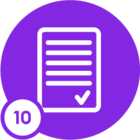We have just had our hosted DEV database refreshed (cloned) from PRD. APPS9
Does anyone have a comprehensive list of activities to be performed post-refresh? For instance, stopping & changing Scheduled tasks.
Does anyone have any clever ideas on how to automate any of this (for instance diverting/rebranding emails when NOT sent from PRD to be clear these are not LIVE messages).
Thanks in advance.





